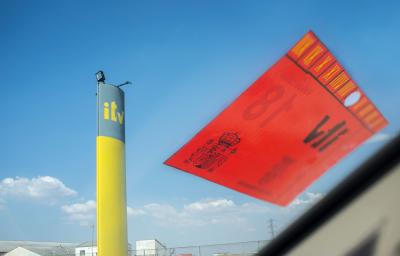After five years, the Ford Fiesta receives a facelift. We face two tough rivals among the little ones: Hyundai i20 and Toyota Yaris
The facelift of the Ford Fiesta is not radical, but it is visible. The front is completely new, the grill receives modifications and now Matrix LED lights shine. Enough for the Ford to stand out from its two rivals?
Design of the Ford Fiesta vs rivals
The more rounded Toyota Yaris is the most unconventional test candidate. With a length of just 3.94 meters, finding parking with this Toyota is even easier than with the Ford (4.07 meters) and the Hyundai i20, which stretches to 4.04 meters.
The short overhangs of the Korean, together with the longer wheelbase (2.58 meters), guarantee the most airy interior. If you regularly drive with four people on board, the Hyundai is clearly the best choice.
In terms of passenger space, the Fiesta sits somewhere between Toyota and Hyundai. If you get into the rear of the Yaris, you’ll be annoyed by the small door opening. The space for the knees in the rear is rather precarious, that of the suitcases (286 liters) is correct.
In the Ford, the energy storage for its hybrid drive is located under the passenger seat to save space, allowing a cargo volume of 292 litres.
In the Hyundai, its mild-hybrid system’s battery robs the rear of a whopping 90 liters of cargo space, leaving just 262.
In the cockpit, the i20 looks the most modern. It has two large screens, but unfortunately there is too much hard plastic.
Ford has given the Fiesta a major technology upgrade. An XL screen now sits in front of the driver, like on its bigger brothers. If you switch between the different driving modes, you get lively transition animations, very similar to the Hyundai.
In the Yaris there are two separate climate zones, but the central screen does not have the definition of its rivals. When it comes to connectivity, they all offer the essentials: Apple CarPlay and Android Auto come standard, but they only work wirelessly on the Yaris.
engines
Under the hood of the Toyota is a roaring 1.5-liter naturally aspirated engine with 125 hp. While it’s not very bright down low, much like the competition’s 1-litre turbos, as soon as you turn it up a notch it starts spinning merrily up to over 6,000 rpm.
The i20’s turbocharged triple is slightly weaker on paper at 120bhp. Hyundai gives it to us with a seven-speed dual-clutch transmission: it’s definitely fun, it shifts quickly and even performs a heel toe when downshifting.
Ford’s one-litre turbocharged three-cylinder makes 125bhp and is mated to a six-speed manual transmission. Its electric assist acts as the starter motor in city traffic, and anyone stuck behind the truck on the freeway will hear the soft whine of recovery.
The Fiesta accelerates to 100 km/h in 10.6 seconds and has a top speed of 200 km/h. The Ford engine really only has one weakness: if you drive at low rpm (more specifically: below 2,000) the EcoBoost responds with significant vibrations.
In the consumption test we have changed gears conservatively before, which resulted in 6.6 liters per 100 kilometers for the Fiesta.
The I20 is a tenth faster from 0 to 100, with 10.5 seconds. The dual-clutch transmission makes the i20 very thirsty, the test throws up 7.7 liters per 100 kilometers, and the mild-hybrid, which works imperceptibly, doesn’t help either.
Like the Fiesta, the Yaris also needs 10.6 seconds to reach 100 km/h from a standstill. Such linear power development is fun, although the translation of the big six-speed box could be even shorter.
The Toyota consumes the least: 5.4 liters passed through the injectors in the test, which must also have something to do with a curb weight of just 1,081 kilograms. Ford and Hyundai weigh about 100 kilos more.
Behaviour
As far as the chassis is concerned, all three handle very well on winding roads. They understeer late, and only when it touches the ESP does it keep them on track. Hyundai and Ford have more steering feel than the Yaris, which for its part brakes better.
Factors to decide the purchase
Place 3: Toyota Yaris 1.5l VVT-i. Small, unconventional and fun car. It loses in total points due to its less space inside and improved sound insulation.
Position 1: Hyundai i20 1.0 T-GDI 48V Hybrid. Wide and technologically up-to-date, a little thirsty with its double clutch, a little noisier than desirable.
Position 1: Ford Fiesta 1.0l EcoBoost Hybrid. He ties the Korean on points with his successful facelift, and the most dynamic behavior of the three. A pity the vibrations at low revs.

















